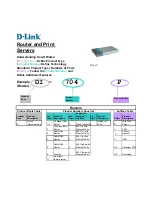
305
IPv6 PIM-SM builds SPTs through SPT switchover more economically than IPv6 PIM-DM does through the
flood-and-prune mechanism.
Assert
IPv6 PIM-SM uses a similar assert mechanism as IPv6 PIM-DM does. For more information, see "
IPv6 BIDIR-PIM overview
In some many-to-many applications, such as multi-side video conference, there might be multiple
receivers interested in multiple IPv6 multicast sources simultaneously. With IPv6 PIM-DM or IPv6 PIM-SM,
each router along the SPT must create an (S, G) entry for each IPv6 multicast source, consuming a lot of
system resources. IPv6 BIDIR-PIM is introduced
to address this problem. Derived from IPv6 PIM-SM, IPv6
BIDIR-PIM builds and maintains bidirectional RPTs, each of which is rooted at an RP and connects IPv6
multiple multicast sources with multiple receivers. Traffic from the IPv6 multicast sources is forwarded
through the RP to the receivers along the bidirectional RPT. In this case, each router needs to maintain
only a (*, G) multicast routing entry, saving system resources.
IPv6 BIDIR-PIM is suitable for networks with dense multicast sources and dense receivers.
The operating mechanism of IPv6 BIDIR-PIM is summarized as follows:
•
Neighbor discovery
•
RP discovery
•
DF election
•
Bidirectional RPT building
Neighbor discovery
IPv6 BIDIR-PIM uses the same neighbor discovery mechanism as IPv6 PIM-SM does. For more information,
see "
RP discovery
IPv6 BIDIR-PIM uses the same RP discovery mechanism as IPv6 PIM-SM does. For more information, see
"
In IPv6 PIM-SM, an RP must be specified with a real IPv6 address. In IPv6 BIDIR-PIM, however, an RP can
be specified with a virtual IPv6 address, which is called the rendezvous point address (RPA). The link
corresponding to the RPA's subnet is called the "rendezvous point link (RPL)." All interfaces connected to
the RPL can act as RPs, which back up one another.
In IPv6 BIDIR-PIM, an RPF interface is the interface on a switch at the RP side, and an RPF neighbor is the
address of the next hop to the RP.
DF election
On a network segment with multiple multicast routers, the same multicast packets might be forwarded to
the RP repeatedly. To address this issue, IPv6 BIDIR-PIM uses a DF election mechanism to elect a unique
DF for each RP on every network segment within the IPv6 BIDIR-PIM domain, and allows only the DF to
forward multicast data to the RP.
DF election is not necessary for an RPL.
















































